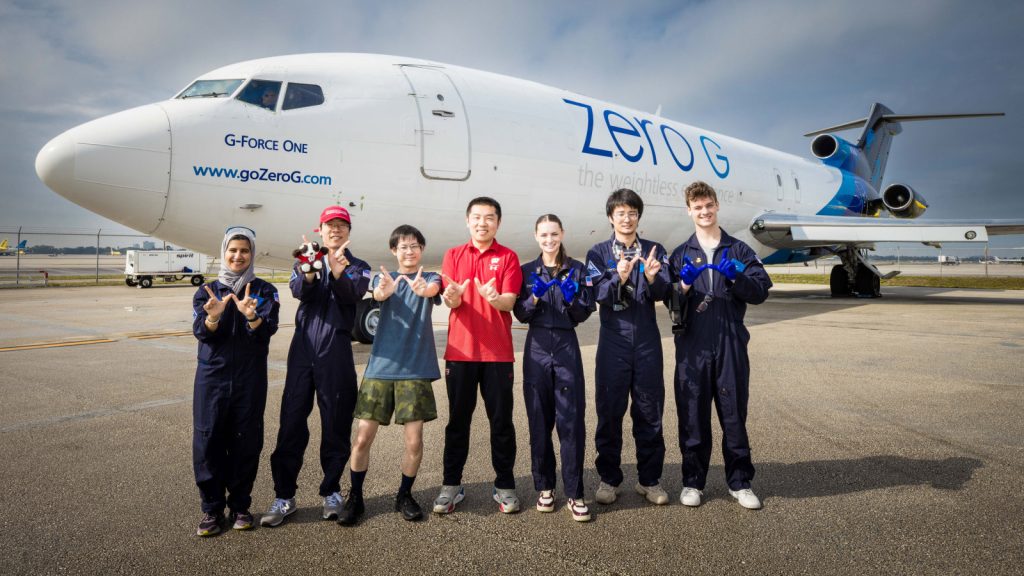20 May UW–Madison engineers mark 3D printing milestone in race to in-space manufacturing

Researchers at the University of Wisconsin–Madison have taken a step toward in-space manufacturing of replacement electronic components by successfully 3D printing RAM device units in zero gravity for the first time. Pictured from left to right, Khawlah Ahmad Alharbi, Xuepeng Jiang, Renjie Nie, Hantang Qin, Rayne Wolf, Pengyu Zhang and Jacob Kocemba pose beside G-Force One, the jet in which they tested their zero-gravity 3D printing technique. Photo: University of Wisconsin–Madison
In a future scenario where astronauts chart long-distance space flights, they won’t be able to call down to earth for a shipment of replacement hardware components like they do today. Before humans can venture deeper into space, engineers will need to tackle the challenge brought by inevitable wear and tear to astronauts’ kit. Researchers at the University of Wisconsin–Madison have taken a step toward in-space manufacturing of replacement electronic components by successfully 3D printing RAM device units in zero gravity for the first time.
The UW–Madison team’s feat occurred in early March 2024 during a parabolic test flight at Fort Lauderdale-Hollywood International Airport in Florida.
NASA, which is funding the research led by UW Industrial and Systems Engineering Assistant Professor Hantang Qin, is interested in developing in-space manufacturing capabilities for electronic components such as semiconductors, actuators and sensors. That would offer a viable option for making repairs in space, without needing to transport replacement parts.
The group encountered a technical glitch during its first two parabolic test flights — roughly 40-minute jaunts with ascents and dives that simulate brief periods of zero-gravity. The researchers spent the week leading up to their third and final flight troubleshooting potential causes of the glitch during 12- to 15-hour days.
“A lot rides on these experiments,” says Rayne Wolf, a PhD student from Potosi, Wisc., and one of the team leads.



